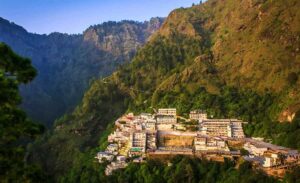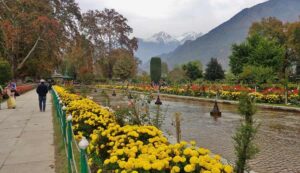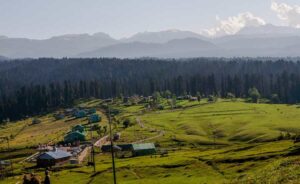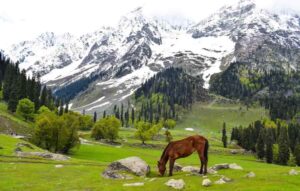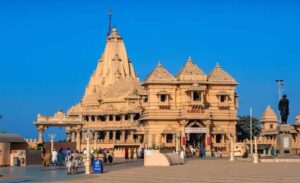List of Ancient Hindu Temples in Kashmir
The region of Kashmir, nestled in the northern part of the Indian subcontinent, has a rich and diverse cultural heritage that dates back millennia. One of the most remarkable aspects of this heritage is the presence of ancient Hindu temples that dot the landscape, bearing witness to a glorious past. These temples, though often overshadowed by the political turmoil and religious diversity in the region, are a testament to the profound influence of Hinduism in Kashmir’s history. In this comprehensive exploration, we delve into the history, architecture, and significance of some of the most renowned ancient Hindu temples of Kashmir.
Shankaracharya Temple:
- Location: Boulevard Road Opp Nehru Park, Reserve Forest Rd, Durgjan, Srinagar
- Deity: Lord Shiva
- Timings: Generally 6:00 AM to 8:00 PM
- How to Reach: Drive up the steep hill, followed by a short climb of stairs.
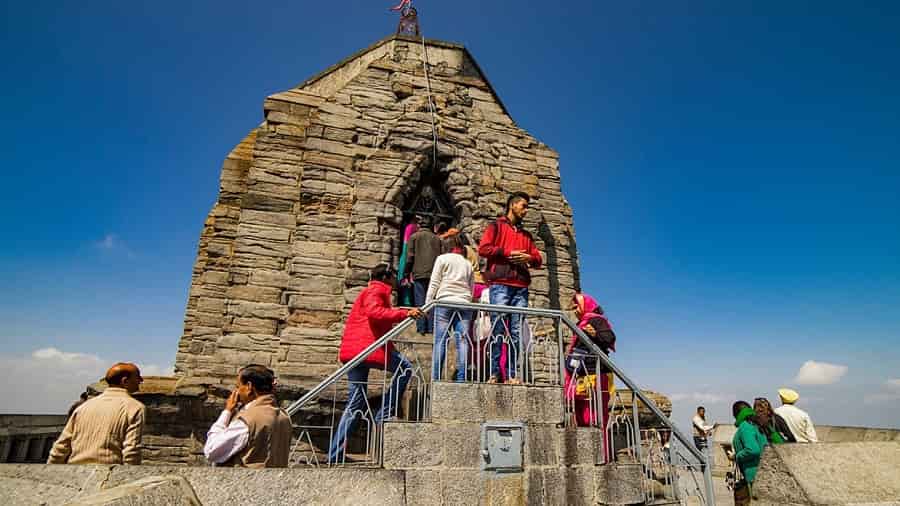
The Shankaracharya Temple, perched majestically atop Shankaracharya Hill in Srinagar, stands as an ancient testament to Hindu spirituality and architectural brilliance. Originally known as Gopadri, this sacred site’s transformation into the present-day Shankaracharya Temple was attributed to the great philosopher-saint, Adi Shankaracharya, during his 8th-century visit to Kashmir. Devoted to Lord Shiva, it is not only the oldest shrine in Kashmir but also a symbol of religious revival. Climbing up the temple’s stone steps, a gift from the Dogra ruler Maharaja Gulab Singh, rewards visitors with panoramic views of the enchanting Srinagar city. Beyond its religious significance, this temple is an archaeological treasure, blending spirituality with awe-inspiring architecture.
Martand Temple
- Location: Anantnag, Jammu and Kashmir, India
- Deity: Sun God
- Timings: Historical site, no specific timings
- How to Reach: By road, located near Srinagar.
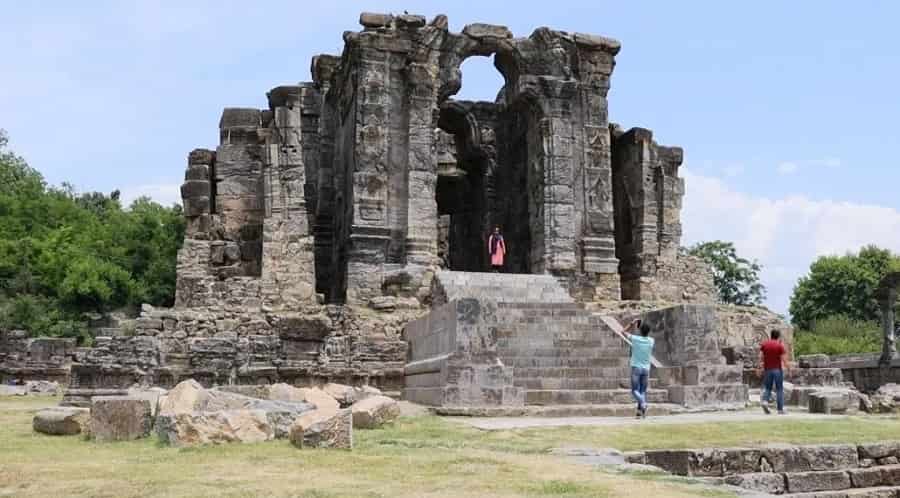
The Martand Temple, an architectural masterpiece, emerged during the 8th century CE under the patronage of King Lalitaditya Muktapida of the Karkota Dynasty. Dedicated to the Sun God, Martand (hence its name), this temple complex once radiated grandeur and devotion. However, the passage of time bore witness to its fall from glory. In the early 15th century, the temple faced its unfortunate demise under the orders of the Muslim ruler Sikandar Butshikan, who commanded a year-long demolition. Today, what remains are the hauntingly beautiful ruins of the Martand Temple, situated five miles from Anantnag in Jammu and Kashmir. Though reduced to fragments, it continues to tell the tale of an era marked by architectural brilliance and devotion to the divine.
Pandrethan Temple
- Location: 3 miles above Srinagar on the Anantnag cart-road
- Deity: Lord Shiva
- Timings: Generally 6:00 AM to 8:00 PM
- How to Reach: Easily accessible by road within Srinagar.
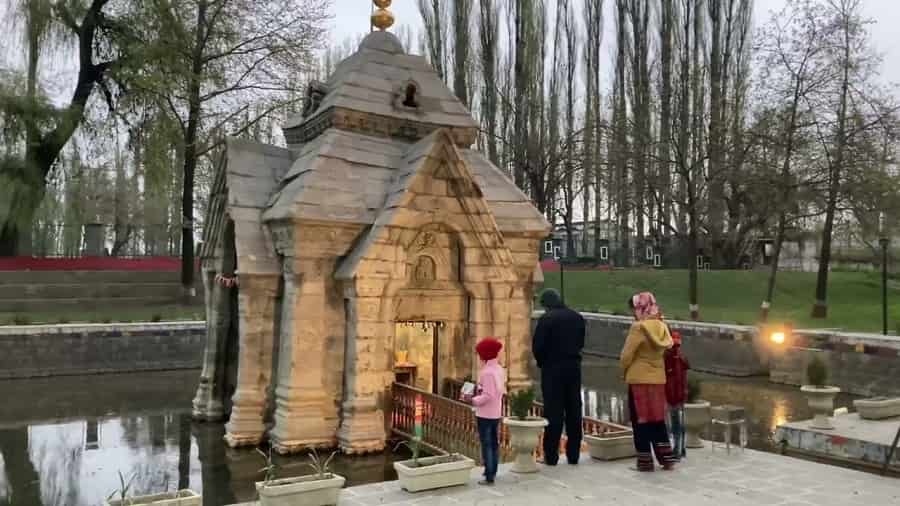
Pandrethan Temple, affectionately known as ‘Paani Mandir,’ is a testament to the artistic finesse of Kashmiri temple architecture. Located approximately 5 km from Srinagar, this ancient edifice dates back to 921 AD. Constructed by Meru Vardhana, the minister of King Partha, who ruled Kashmir during 921-931 AD, the temple is a sanctuary dedicated to Lord Vishnu. Surrounded by a tranquil pond, Pandrethan Temple enchants visitors with its symmetrical and geometrically precise design, showcasing the artistry and devotion of its creators.
Payar Temple
- Location: Kakapora Payar village near Pulwama City
- Deity: Lord Shiva
- Timings: 6:30 PM to 8:00 PM
- How to Reach: 5 Kms from Pulwama Main Bus Stand
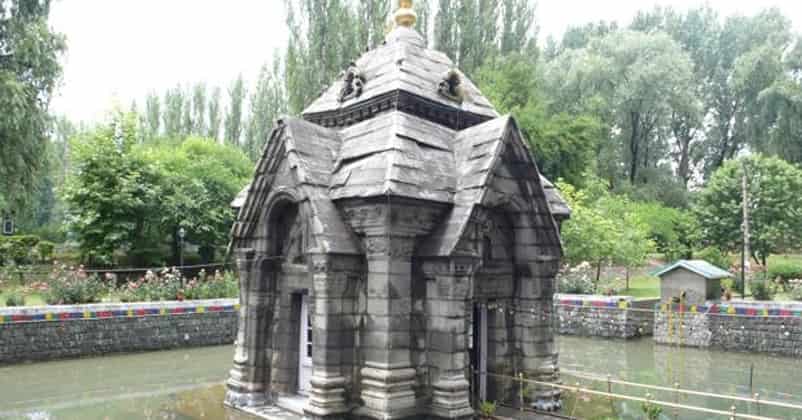
The Payar Temple, a sanctuary devoted to Lord Shiva, is a marvel dating back to the 11th century CE. Nestled 12 km west of Avantipur in the village of Payar within the Pulwama district, it boasts ten beautifully preserved stones, exemplifying extraordinary architectural and sculptural mastery. The temple’s open design features a double pyramidal roof adorned with triangular pediments on all four sides, enclosing a trefoil arch. Of particular note is the eastern trefoil niche, housing an image of Lakulisa, seated cross-legged on a wicker seat. Payar Temple stands as an architectural gem, captivating all who visit with its historical and spiritual significance.
Shankaragaurishvara Temple
- Location: Pattan, Baramulla
- Deity: Lord Shiva
- Timings: 7:00 AM to 8:00 PM
- How to Reach: Easily accessible by road within Baramulla.
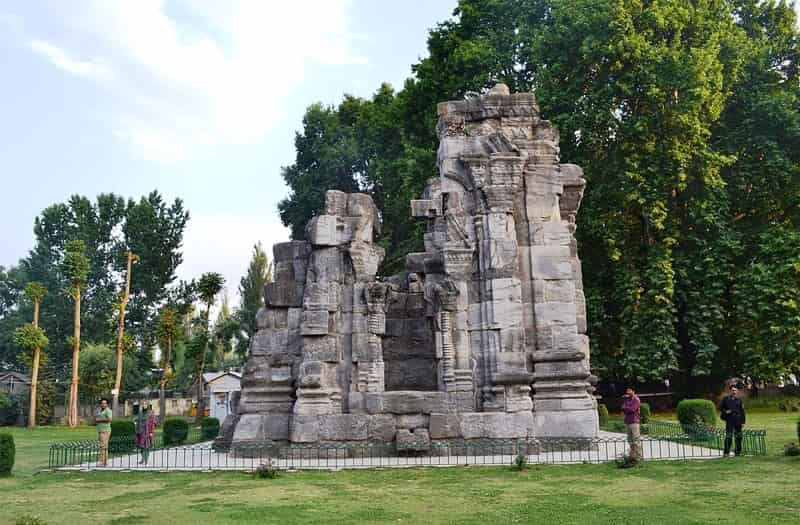
Sankara Guruvaram (Sugandesha) Temple, dedicated to Lord Shiva, graces the town of Patan near Baramulla. Constructed during the reign of Shankaravarman of Kashmir, who ruled between 883 and 902 AD, this temple bears witness to the bygone era of spiritual devotion. While the temple now stands in a dilapidated state, it once held a special place in the hearts of the faithful. Its architecture mirrors the splendor of the nearby Shankaracharya Temple and stands among more than 15 significant temples promoting tourism in the state of Jammu and Kashmir.
Naranag Temple
- Location: Naranag village, Ganderbal
- Deity: Lord Shiva
- Timings: Typically 6:00 AM to 8:00 PM
- How to Reach: Located in the Ganderbal district, accessible by road from Srinagar (50 km).
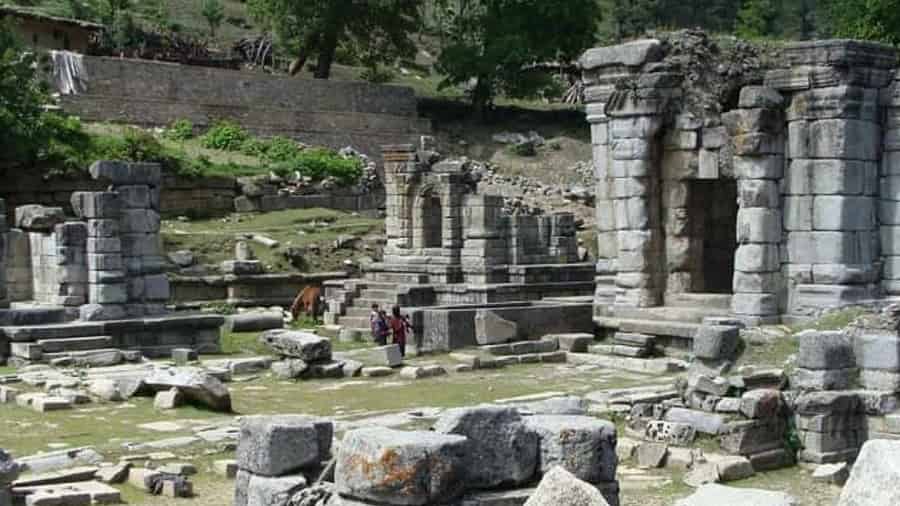
Naranag Temple, a revered archaeological site, lies nestled in the lap of the Harmukh Mountain, approximately 50 kilometers from Srinagar. This cluster of temples, dating back to the 8th century, tells the story of King Lalithdatiya Muktadiya of the Kayastha Naga Karkota dynasty. With its impressive architecture, Naranag Temple reflects the glorious artistry of the 8th century. Although the temple’s historical grandeur has faded, efforts have been made to preserve it from encroachments, ensuring that its architectural brilliance continues to echo through time.
Avantipur Temple
- Location: Avantipur, Jammu and Kashmir, India
- Deity: Lord Vishnu
- Timings: Historical site, no specific timings
- How to Reach: Located near Srinagar (30 km), accessible by road.
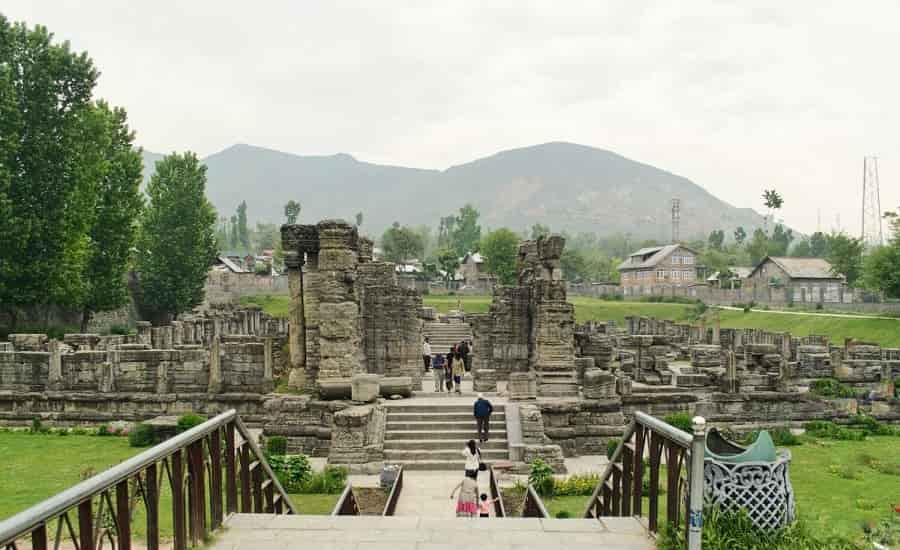
Avantiswami (Avantipur) Temple, nestled in Pulwama district, bears testament to the reign of King Avantivarman between 855 and 883 AD. This Vaishnava temple, with its magnificent architecture, once beckoned the faithful. While its twin shrines, one dedicated to Lord Vishnu (Avantisvamin) and the other to Lord Shiva (Avantisvara), witnessed destruction during medieval times, the smaller Shiva temple remains in use today. The Avantiswami Temple, now in ruins, stands as a poignant reminder of a bygone era, its outward appearance adorned with Greek architectural influences.
Mamaleshwar Temple
- Location: Pahalgam, 192123
- Deity: Lord Shiva
- Timings: 9:00 AM to 6:0:0 PM
- How to Reach: 1 Kilometre From Pahalgam
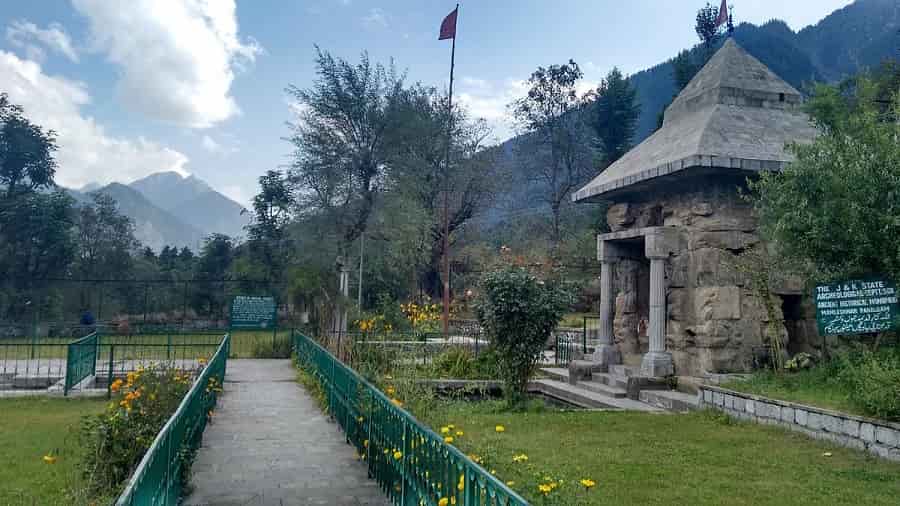
The Mamaleshwar Temple, a venerable site in Pahalgam, boasts a history tracing back to the 12th century. Built by King Jayasimha on the banks of the River Lidder, this temple venerates Lord Shiva. Perched at an elevation of 8800 ft above sea level, it is steeped in spirituality and history. The temple’s unique legacy includes the placement of Lord Ganesh as the doorkeeper, granting entry only with his permission. In summer, the temple draws devotees and travelers alike, offering a glimpse into the spiritual heritage of Pahalgam.
Loduv Temple
- Location: Srinagar, Jammu and Kashmir
- Deity: Lord Shiva
- Timings: 8:00 AM to 6:0:0 PM
- How to Reach: Accessible by road, 16 km from Srinagar.
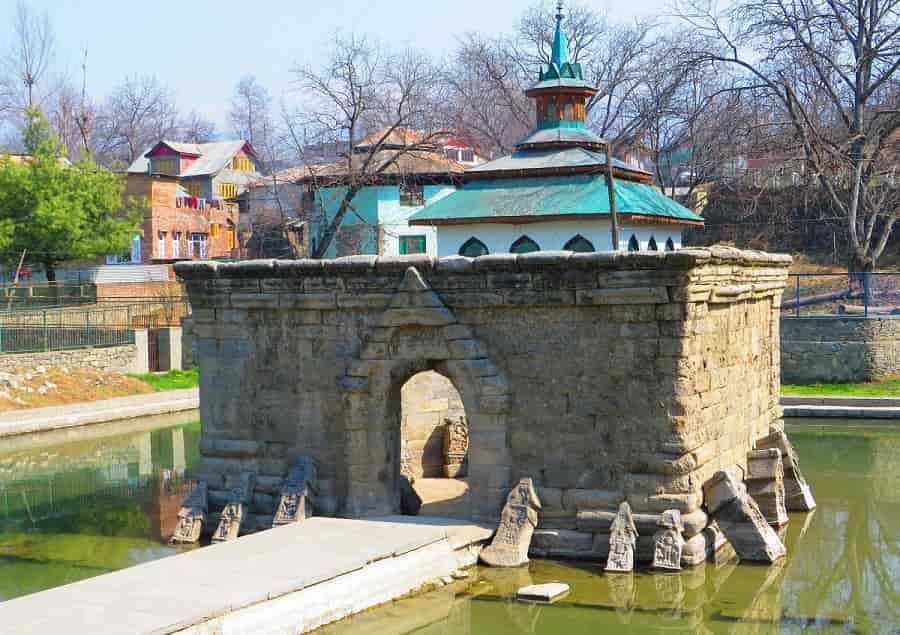
Situated on a hillock in the Loduv village, the Loduv Temple is an ancient marvel dating back to the 8th century. Located approximately 4 miles from Barus in the Srinagar District of Jammu and Kashmir, it possesses a serene charm. The temple’s design features a water drain for sacred services, while a central tank once graced its premises. Though time has taken its toll, the Loduv Temple remains a silent witness to the architectural grace of its era.
Narastan Mandir
- Location: Tral town in Pulwama
- Deity: Lord Vishnu
- Timings: 6:00 AM to 6:0:0 PM
- How to Reach: 60 km from Srinagar and 16 km from Tral.
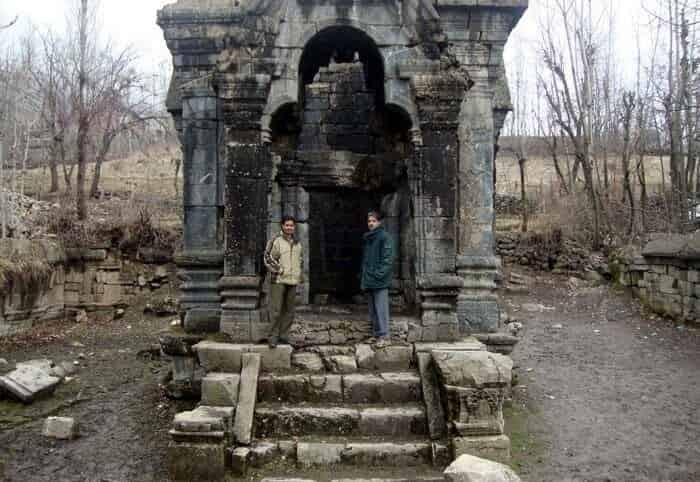
Narastan Mandir, now in ruins, lies in the North-East of Avantipora, 16 km from Tral town toward Aripal. Its ancient temple, dedicated to Lord Sri Vishnu, stands against the backdrop of the lofty Brariaangan Range. With a history dating back over 1400 years, this holy shrine once housed a Shiv Linga within a temple cell measuring 8 feet 6 inches internally. Sadly, it suffered destruction at the hands of the invader Sikander Butshi’kan, an Islamic fanatic descended from Sufi lineage. Despite its present condition, Narastan Mandir retains its historical significance.
Sharda Temple
- Location: Sharda, Azad Jammu and Kashmir, Pakistan-administered Kashmir
- Deity: Goddess Saraswati
- Timings: No specific timings, generally open during the day
- How to Reach: Located in POK, accessible by road.
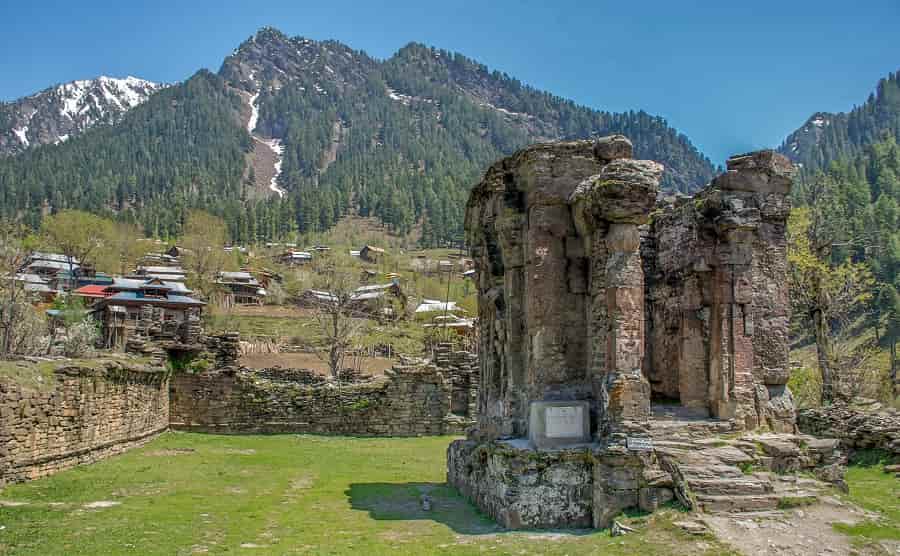
The Sharda Temple, located in the Neelam (Kishanganga) valley, is a revered sanctuary nestled just beyond the line of control in Pakistan-occupied Kashmir. It holds a sacred place among the Kashmiri Pandits as one of the three holiest sites, alongside the Martand Sun Temple and the Amarnath Temple. This Shakti Peeth, dedicated to the goddess Sharda (a form of Devi Sati), represents the rich spiritual heritage of South Asia. Although the temple lies in ruins today, it continues to be revered as a symbol of faith, history, and devotion.
Datta Mandir
- Location: Banks of Jhelum
- Deity: Lord Vishnu
- Timings: 6:00 AM to 8:0:0 PM
- How to Reach: Easily accessible by road Srinagar.
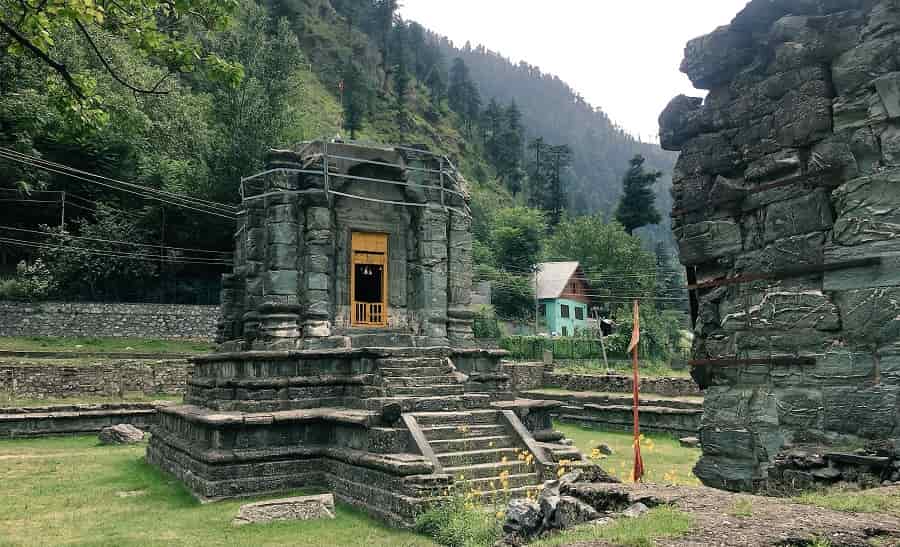
Datta Mandir, also known as Detha Mandir Bandi by the ASI (Archaeological Survey of India), stands in close proximity to the Boniyar temple. This architectural marvel is believed to have been constructed in the 10th century, following the distinctive Kashmiri architectural style. According to legend, the temple’s origins trace back to the time of the Pandavas during their exile. The stones used in its construction were laboriously transported from the nearby mountains, with the mighty Bheema playing a pivotal role in this endeavor. This sacred site finds its serene abode on the banks of the Jhelum River and is dedicated to Lord Vishnu.
Unfortunately, the temple endured desecration during the tumultuous events of 1947 when Pakistani tribal forces attacked the region. Numerous ancient idols were marred, and precious sacred ornaments were pilfered. In 1992, in an effort to restore the sanctity of this revered place, the Indian army erected a resplendent marble statue of Lord Shiva within its precincts.
Challenges and Preservation Efforts
The ancient Hindu temples of Kashmir have faced numerous challenges over the centuries, including invasions, neglect, and natural disasters. The region’s tumultuous history, marked by religious conflicts and political unrest, has also taken a toll on these sacred sites.
Efforts have been made to preserve and restore these temples. Government agencies, local communities, and heritage organizations have collaborated to protect the cultural and historical significance of these temples. Restoration work has been undertaken to repair and maintain the architectural integrity of these structures.
However, the preservation of these temples remains a complex and ongoing task, especially in the context of Kashmir’s contemporary challenges. Political tensions, demographic shifts, and security concerns have made it difficult to ensure the long-term safeguarding of these sites.
Conclusion
The ancient Hindu temples of Kashmir are not just architectural marvels but living testaments to a glorious past. They are repositories of history, spirituality, and cultural diversity, reflecting the resilience of the people of Kashmir. Despite the challenges they have faced, these temples continue to inspire awe and reverence among pilgrims and tourists alike.
As we celebrate the legacy of these temples, it is essential to recognize the need for their preservation and protection. Efforts must be made to ensure that these sacred sites endure for future generations, serving as a bridge between the past and the present, and as symbols of unity and cultural diversity in a region that has often been marked by division.

